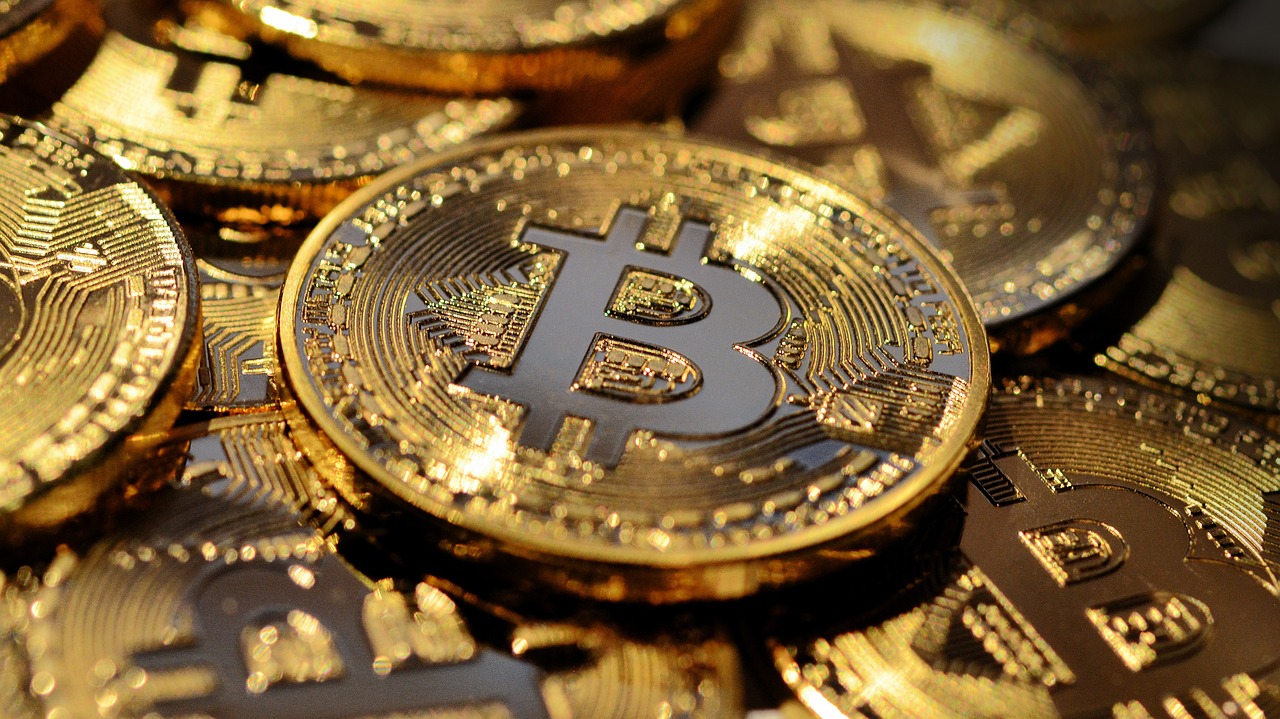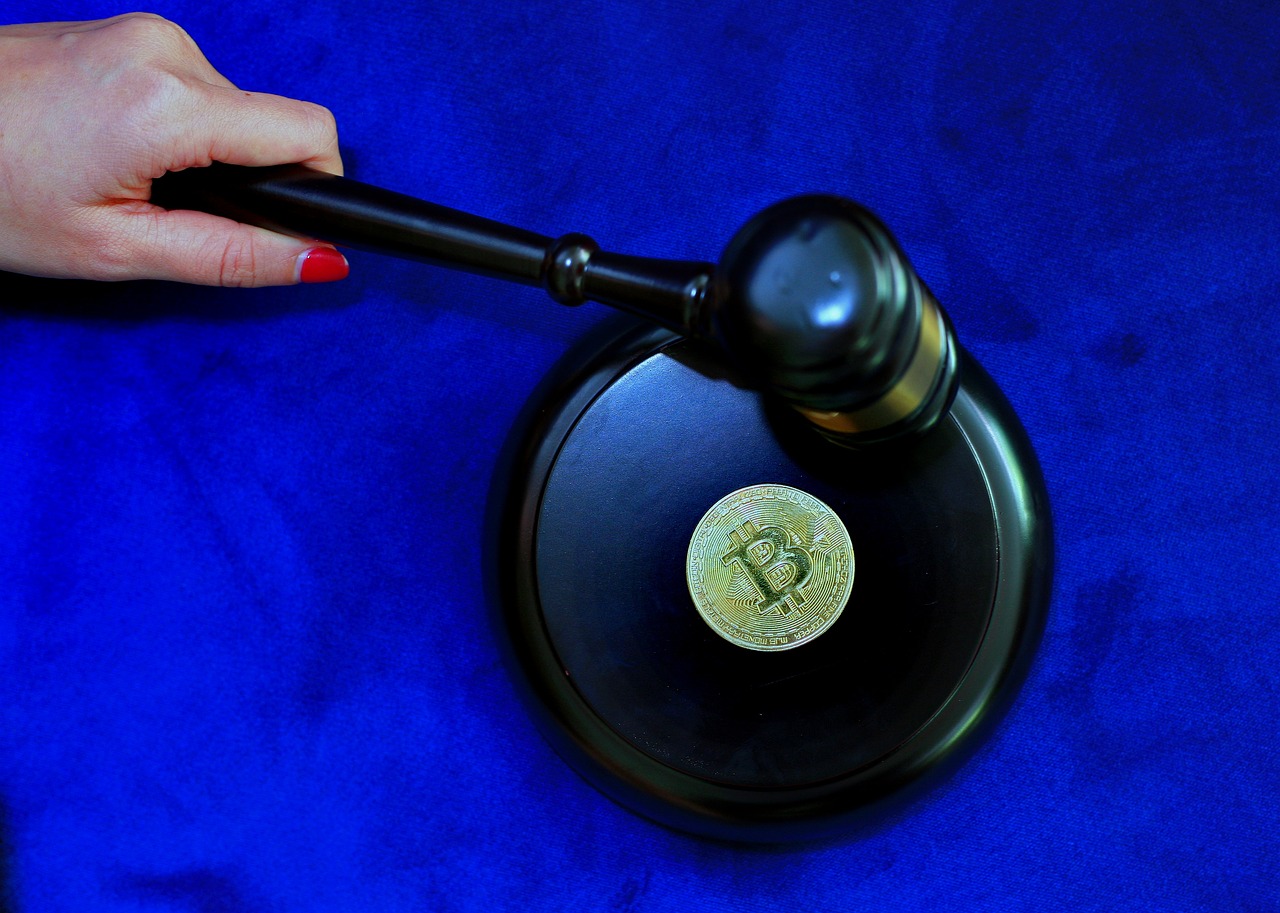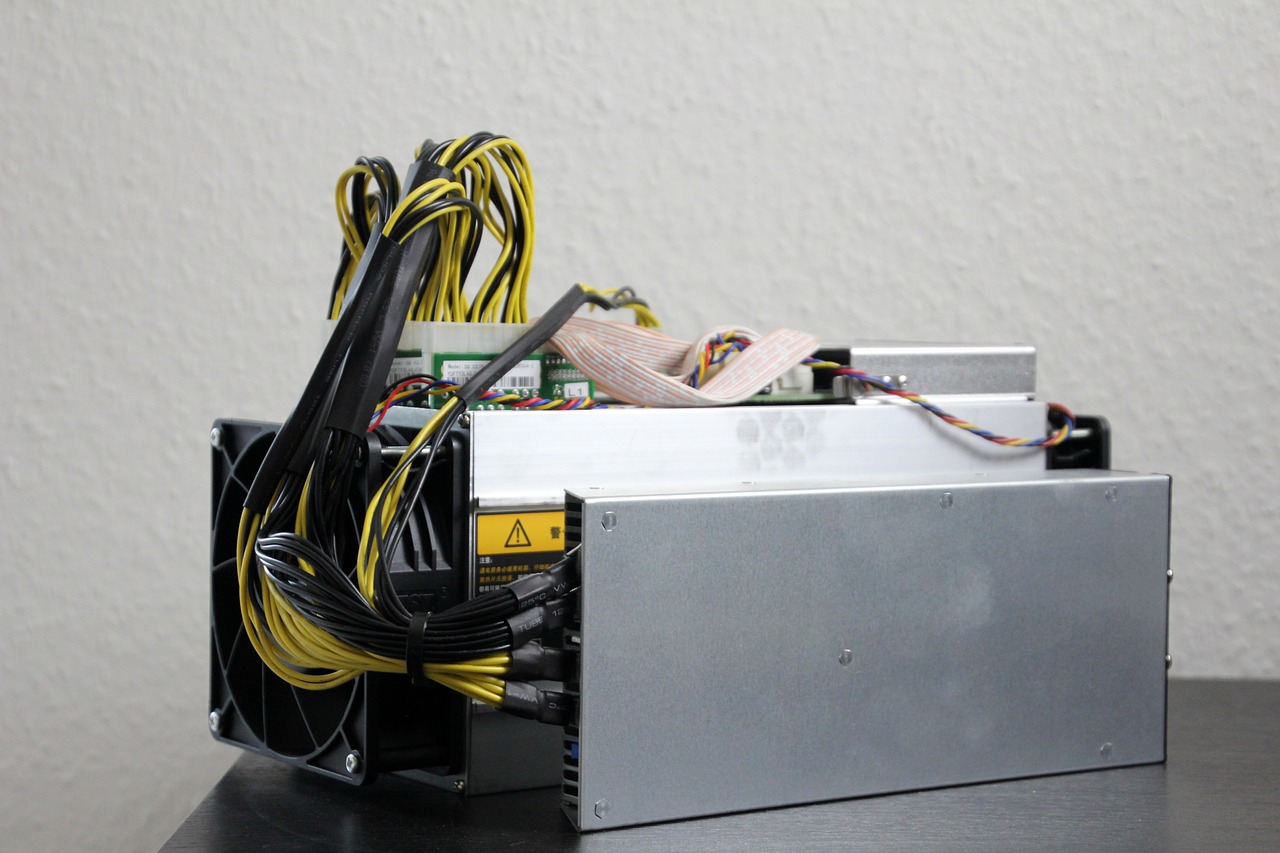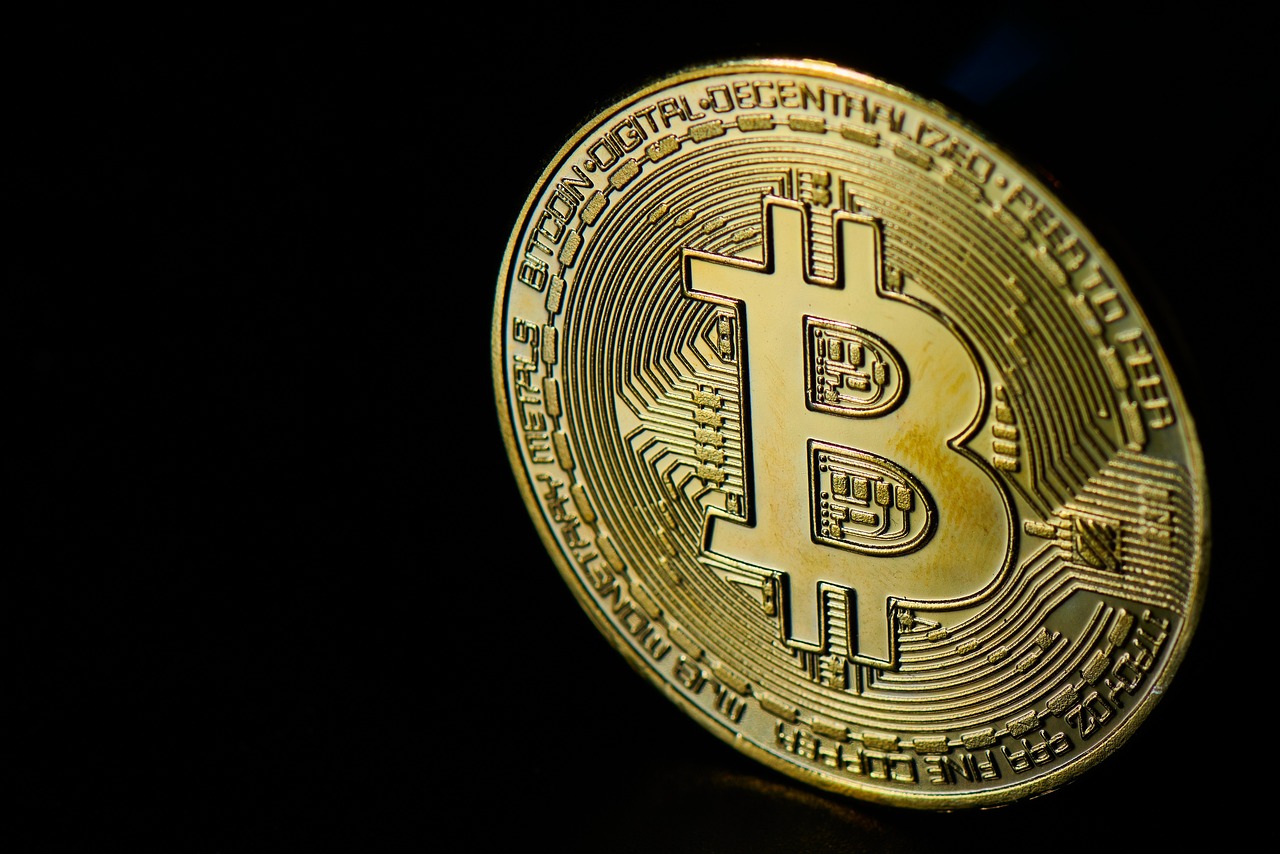The Role of Stablecoins in Crypto Trading
In the ever-evolving world of cryptocurrency, the emergence of stablecoins has revolutionized the way traders interact with digital assets. These unique cryptocurrencies are designed to maintain a stable value, often pegged to traditional assets like the US dollar or gold. This stability makes them a vital tool for traders looking to navigate the often tumultuous waters of the crypto market. But how do stablecoins really function, and why are they becoming increasingly popular among traders? In this article, we will explore the intricate role of stablecoins in crypto trading, their benefits, challenges, and what the future might hold for these digital assets.
Stablecoins are like the reliable friend in your trading circle; they keep things steady when the market gets shaky. They can be broadly categorized into three types: fiat-collateralized, crypto-collateralized, and algorithmic stablecoins. Fiat-collateralized stablecoins, such as USDC or Tether (USDT), are backed by reserves of traditional currency. This means for every stablecoin issued, there is an equivalent amount of fiat currency held in reserve. On the other hand, crypto-collateralized stablecoins are backed by other cryptocurrencies, which can introduce a layer of complexity and risk. Lastly, algorithmic stablecoins use smart contracts to control the supply of coins, adjusting it based on demand to maintain price stability.
So, why should traders consider using stablecoins? The answer lies in their numerous advantages. First and foremost, they significantly reduce volatility, allowing traders to hold their assets without the fear of massive price swings. This stability is crucial during periods of market turbulence when traditional cryptocurrencies can experience drastic fluctuations.
Imagine trying to cross a rickety bridge during a storm; that’s what trading with traditional cryptocurrencies can feel like at times. Stablecoins provide a safer trading environment, acting as a buffer against the wild price swings that are characteristic of the crypto market. By converting volatile assets into stablecoins, traders can protect their profits and minimize losses.
When comparing stablecoins to traditional cryptocurrencies, the difference in price stability is striking. For instance, while Bitcoin and Ethereum can see price changes of 10% or more in a single day, stablecoins typically maintain their value within a narrow range. This comparative stability is why many traders prefer to hold stablecoins during uncertain market conditions.
The presence of stablecoins can enhance overall market confidence. Just like having a safety net, knowing that a stable asset is available fosters trust among traders and investors. This increased confidence can lead to greater participation in the market, which in turn can stimulate growth and innovation.
Another significant advantage of stablecoins is their ability to enhance liquidity in crypto markets. They allow for quicker trades and easier access to funds, which is essential for traders looking to capitalize on short-term opportunities. With stablecoins, traders can swiftly move in and out of positions without the delays often associated with traditional banking systems.
Despite their many benefits, stablecoins are not without challenges. Regulatory scrutiny is increasing worldwide, as governments seek to understand and control this burgeoning market. Traders must stay informed about potential regulations that could impact stablecoin usage and trading.
As stablecoins gain popularity, they are increasingly under the microscope of regulators. The potential impact of regulation could reshape how stablecoins are used in trading. Traders need to be aware of these developments to navigate the changing landscape effectively.
Another risk associated with stablecoins is the potential for market manipulation. Just like a magician who can make things appear and disappear, manipulators can exploit the mechanisms of stablecoins to influence prices. This poses risks for traders, as sudden changes in value can lead to unexpected losses.
Looking ahead, the future of stablecoins in crypto trading is a hot topic. As the market continues to evolve, we can expect to see advancements in technology and regulation that will shape the role of stablecoins. They may become even more integrated into trading platforms, providing traders with innovative tools to enhance their strategies.
- What are stablecoins? Stablecoins are cryptocurrencies designed to maintain a stable value by pegging them to reserve assets like fiat currency or commodities.
- Why are stablecoins important for traders? They reduce volatility, enhance liquidity, and provide a safer trading environment.
- What risks are associated with stablecoins? Stablecoins face regulatory scrutiny and can be susceptible to market manipulation.
- What is the future of stablecoins? The future is promising, with advancements in technology and regulation likely to shape their role in the crypto market.

Understanding Stablecoins
Stablecoins are a fascinating innovation in the cryptocurrency world, designed specifically to maintain a stable value by pegging them to a reserve asset. Imagine trying to navigate a stormy sea; traditional cryptocurrencies can be like a ship tossed by waves, while stablecoins serve as a sturdy lighthouse guiding traders safely to shore. There are several types of stablecoins, each with its own underlying mechanisms that contribute to their stability. Generally, they can be categorized into three main types: fiat-collateralized, crypto-collateralized, and algorithmic stablecoins.
Fiat-collateralized stablecoins are the most common and are backed by real-world assets, like the US Dollar or Euro. For every stablecoin issued, a corresponding amount of fiat currency is held in reserve. This one-to-one backing helps maintain price stability. For example, Tether (USDT) is pegged to the US Dollar, making it relatively easy for traders to understand its value. On the other hand, crypto-collateralized stablecoins are backed by other cryptocurrencies. They often involve over-collateralization to account for price volatility. A popular example is DAI, which is backed by Ethereum and other digital assets, allowing it to maintain its peg through smart contracts.
Lastly, we have algorithmic stablecoins, which are not backed by any collateral but instead use algorithms to control the supply of the stablecoin. When the price rises above the peg, the system increases supply, and when it drops, it reduces supply. This approach can be likened to a thermostat, adjusting the temperature to maintain a comfortable environment. While these stablecoins can offer innovative solutions, they also come with their own set of risks, primarily related to the effectiveness of the algorithms used.
In addition to understanding the types of stablecoins, it's crucial to grasp their underlying mechanisms. The stability of these coins is not merely a product of their backing but also of the trust that users place in them. When traders believe that a stablecoin will maintain its value, they are more likely to use it for transactions, trading, or as a store of value. This trust is built over time through transparency and the ability of stablecoins to consistently hold their peg, even during turbulent market conditions.
In summary, stablecoins play a vital role in the cryptocurrency ecosystem, providing a bridge between the volatility of traditional cryptocurrencies and the stability of fiat currencies. They allow traders to move in and out of positions without the fear of rapid price fluctuations, making them an essential tool for anyone involved in crypto trading. As the market evolves, understanding stablecoins will become increasingly important for both new and seasoned traders alike.

Benefits of Using Stablecoins
Stablecoins have emerged as a game-changer in the cryptocurrency market, offering a range of benefits that cater to both traders and investors. One of the most significant advantages is their ability to reduce volatility. Unlike traditional cryptocurrencies, which can experience wild price swings, stablecoins are designed to maintain a stable value by pegging them to reserve assets like fiat currencies or commodities. This stability is crucial for traders who want to avoid the risks associated with unpredictable market movements. Imagine trying to navigate a stormy sea; stablecoins act as your sturdy vessel, keeping you afloat while others may capsize.
Another compelling benefit of stablecoins is the ease of transactions. When trading in the crypto space, having a reliable means of exchange is essential. Stablecoins provide a seamless way to conduct transactions without the fear of sudden price drops. For instance, if a trader wants to buy Bitcoin but is concerned about the volatility, they can convert their funds into a stablecoin, execute the trade, and then convert back to their desired cryptocurrency. This process is not only efficient but also helps in maintaining liquidity in the market.
Speaking of liquidity, stablecoins significantly enhance the liquidity in crypto markets. They allow for quicker trades and easier access to funds, which is vital for traders looking to capitalize on market opportunities. With stablecoins, traders can swiftly enter and exit positions without worrying about price fluctuations during the transaction. This feature is akin to having a fast lane on a busy highway—traders can maneuver through the market with agility, seizing opportunities as they arise.
Furthermore, the presence of stablecoins can bolster market confidence. When traders know they have a stable asset to rely on, it fosters a sense of trust within the market. This confidence can lead to increased participation from both retail and institutional investors, further driving the growth of the cryptocurrency ecosystem. In a way, stablecoins act as a safety net, reassuring traders that even in a volatile environment, there is a reliable option to safeguard their assets.
To summarize, the benefits of using stablecoins in crypto trading are manifold:
- Volatility Reduction: Provides a safer trading environment.
- Ease of Transactions: Facilitates seamless trading experiences.
- Enhanced Liquidity: Allows for quicker trades and access to funds.
- Market Confidence: Fosters trust among traders and investors.
As the cryptocurrency landscape continues to evolve, the role of stablecoins is likely to become even more significant. They not only provide a refuge from volatility but also enhance the overall trading experience, making them an indispensable tool for anyone involved in the crypto market.

Volatility Reduction
One of the primary reasons traders flock to stablecoins is their ability to mitigate the wild swings in price that are often seen in the broader cryptocurrency market. Imagine being on a roller coaster where the highs are exhilarating but the drops can leave you feeling nauseous. That's the ride many experience with traditional cryptocurrencies like Bitcoin or Ethereum. In contrast, stablecoins offer a much smoother journey, providing a sense of security and predictability in an otherwise tumultuous environment.
Stablecoins achieve this stability by pegging their value to a reserve asset, such as the US dollar or gold. This pegging mechanism acts like a safety net, allowing traders to convert their volatile assets into something more stable when market conditions become shaky. For instance, when Bitcoin's price plummets, a trader can quickly switch to a stablecoin, preserving their capital and avoiding significant losses. This ability to swiftly transition between assets is crucial, especially in a market where every second counts.
Moreover, the reduced volatility of stablecoins fosters a more predictable trading environment. Traders can make strategic decisions without the constant fear of sudden price drops. To illustrate, consider the following table that compares the price fluctuations of a traditional cryptocurrency versus a stablecoin over a given period:
| Asset | Price Change (%) | Average Daily Volatility (%) |
|---|---|---|
| Bitcoin | -15% to +20% | 5% |
| USDT (Tether) | -1% to +1% | 0.2% |
As demonstrated, while Bitcoin can experience dramatic price swings, stablecoins like Tether maintain a much tighter price range. This characteristic is particularly advantageous for traders looking to lock in profits or manage risks without the fear of being caught off guard by sudden market changes.
In addition to providing a safer trading environment, stablecoins also enhance the overall market confidence. When traders know they can rely on a stable asset, it encourages them to engage more actively in the market. This increased participation can lead to greater liquidity and more robust trading volumes, ultimately benefiting everyone involved.
In conclusion, the volatility reduction that stablecoins offer is not just a minor benefit; it is a game-changer for traders navigating the unpredictable waters of cryptocurrency trading. By providing a stable alternative, they empower traders to make informed decisions, safeguard their investments, and contribute to a healthier market ecosystem.

Comparative Stability
When it comes to the world of cryptocurrencies, volatility is a term that often raises eyebrows. Traditional cryptocurrencies like Bitcoin and Ethereum can experience wild price swings, sometimes within a matter of hours. This is where stablecoins come into play, providing a much-needed safe haven for traders looking to navigate the turbulent waters of the crypto market. Stablecoins are pegged to stable assets, such as fiat currencies or commodities, which allows them to maintain a more consistent value compared to their more volatile counterparts.
To illustrate this point, consider the following table that compares the price fluctuations of Bitcoin, Ethereum, and a popular stablecoin, USDT (Tether), over a one-month period:
| Cryptocurrency | Price Change (%) |
|---|---|
| Bitcoin | ±20% |
| Ethereum | ±15% |
| USDT (Tether) | ±0.5% |
As you can see, while Bitcoin and Ethereum can fluctuate dramatically, USDT remains relatively stable, showcasing the essence of stablecoins. This comparative stability is crucial for traders who want to protect their investments without constantly worrying about the market's next move. By converting their volatile assets into stablecoins during uncertain times, traders can avoid significant losses and position themselves for future opportunities.
Moreover, the ability to easily convert cryptocurrencies into stablecoins allows traders to maintain their liquidity without sacrificing the potential for gains. Think of stablecoins as a financial buffer; they provide a cushion during market downturns while allowing traders to re-enter the market when conditions improve. This flexibility is one of the key reasons why stablecoins have gained popularity among both novice and experienced traders alike.
In summary, the comparative stability offered by stablecoins not only helps in mitigating risks associated with volatile cryptocurrencies but also enhances overall trading strategies. By incorporating stablecoins into their portfolios, traders can navigate the crypto landscape with greater confidence and agility.
- What are stablecoins? Stablecoins are cryptocurrencies designed to maintain a stable value by pegging them to a reserve asset, such as a fiat currency.
- How do stablecoins reduce volatility? By being pegged to stable assets, stablecoins experience significantly less price fluctuation compared to traditional cryptocurrencies.
- Are stablecoins safe to use? While stablecoins offer reduced volatility, they are not without risks, including regulatory scrutiny and potential market manipulation.
- Can stablecoins be used for trading? Yes, stablecoins are commonly used for trading as they provide a stable medium to exchange value without the volatility of other cryptocurrencies.

Market Confidence
When it comes to the world of cryptocurrency, plays a pivotal role in determining how traders and investors engage with various digital assets. Stablecoins, with their inherent ability to maintain a stable value, act as a beacon of trust in an otherwise tumultuous environment. Imagine walking into a stormy sea; stablecoins are like a sturdy lighthouse guiding ships safely to shore. They provide a sense of security that can be hard to come by in the highly volatile crypto landscape.
One of the key ways stablecoins enhance market confidence is by reducing the fear of sudden price drops. Traditional cryptocurrencies can experience wild swings in value, sometimes within a matter of hours. For instance, Bitcoin can surge to new heights only to plummet just as quickly. In contrast, stablecoins, which are often pegged to fiat currencies like the US dollar or commodities, offer a more predictable value. This predictability allows traders to make decisions with a clearer mind, knowing that their assets won’t be subject to the same drastic fluctuations.
Moreover, the presence of stablecoins can help to stabilize the broader crypto market. When traders feel secure using stablecoins, they are more likely to engage in trading activities, thus increasing overall market liquidity. This increased activity can create a positive feedback loop: as more traders enter the market, prices stabilize further, leading to even greater confidence among investors. It’s like a snowball effect, where each roll adds to the momentum, building a more robust and stable market environment.
Additionally, stablecoins can act as a bridge between the traditional financial system and the world of cryptocurrencies. They allow users to easily convert their assets to a stable value, making it easier to enter or exit positions without the fear of losing significant value in the process. This seamless transition can encourage more participants to dip their toes into the crypto waters, knowing they have a stable asset to rely on.
However, it’s essential to note that market confidence is not just about stability; it’s also about transparency and trust in the underlying mechanisms of stablecoins. Traders need to be assured that the reserves backing these coins are legitimate and readily available. This is where the importance of regulatory oversight comes into play. When stablecoins are backed by transparent and audited reserves, it fosters greater trust among users. In essence, the more transparent the system, the more confidence traders will have to engage actively in the market.
In conclusion, stablecoins serve as a crucial element in enhancing market confidence within the cryptocurrency ecosystem. By providing a reliable and stable asset, they help to mitigate the fears associated with volatility, encourage trading activity, and bridge the gap between traditional finance and digital currencies. As the crypto market continues to evolve, the role of stablecoins in instilling confidence will likely become even more significant.
- What are stablecoins? Stablecoins are cryptocurrencies designed to maintain a stable value by pegging them to a reserve asset, such as fiat currencies or commodities.
- How do stablecoins enhance market confidence? They reduce volatility, provide predictable value, and create a more stable trading environment, which encourages more participants to engage in the market.
- Are stablecoins regulated? Regulation varies by jurisdiction, and while some stablecoins are backed by audited reserves, others may face scrutiny from regulatory bodies.
- Can stablecoins be manipulated? Yes, like any asset, stablecoins can be susceptible to market manipulation, which poses risks for traders.
- What is the future of stablecoins? The future looks promising as stablecoins continue to evolve and integrate into the broader financial ecosystem, potentially shaping the next wave of digital currency adoption.

Liquidity in Crypto Markets
When we talk about liquidity in crypto markets, we're essentially discussing how easily assets can be bought or sold without causing a significant impact on their price. In the world of cryptocurrencies, where price swings can be as wild as a rollercoaster ride, stablecoins play a crucial role in enhancing this liquidity. Imagine trying to sell a rare collectible; if there are no buyers, you're stuck holding onto it. However, stablecoins act like a bridge, connecting traders to the market and ensuring that transactions can happen smoothly and efficiently.
One of the standout features of stablecoins is their ability to provide a stable medium of exchange. Unlike traditional cryptocurrencies that can fluctuate wildly, stablecoins are pegged to stable assets, such as fiat currencies or commodities. This pegging means that traders can move in and out of positions without the constant worry of losing value during their transactions. For instance, if you're trading Bitcoin and the market suddenly dips, instead of panicking, you can quickly convert your assets into a stablecoin, thereby preserving your capital.
Furthermore, stablecoins facilitate quicker trades and easier access to funds. In a market that operates 24/7, the ability to execute trades rapidly can make a world of difference. Traders can take advantage of price movements in real-time, ensuring they don't miss out on potential profits. Here’s a quick rundown of how stablecoins enhance liquidity:
- Faster Transactions: Stablecoins allow for instant transactions across various platforms, reducing the time it takes to execute trades.
- Cross-Platform Compatibility: Many exchanges support stablecoins, making it easier for traders to move their assets between different platforms without incurring high fees.
- Reduced Slippage: With higher liquidity, traders experience less slippage, meaning they can execute trades at prices closer to their intended values.
To put it simply, stablecoins are like the oil that keeps the machinery of crypto trading running smoothly. They not only provide a safe harbor during turbulent times but also ensure that the market remains vibrant and accessible. With the increasing adoption of stablecoins, we’re witnessing a shift in how traders approach the market. They can now focus more on strategy and less on the fear of sudden price drops.
In conclusion, the role of stablecoins in enhancing liquidity cannot be overstated. They serve as a vital tool for traders, allowing them to navigate the unpredictable waters of the cryptocurrency market with greater confidence. As the landscape continues to evolve, the importance of stablecoins will likely grow, further solidifying their place in the trading ecosystem.

Challenges and Risks
While stablecoins present a plethora of advantages in the cryptocurrency market, they are not without their challenges and risks. As the digital currency landscape evolves, so too do the complexities surrounding stablecoins. One of the most pressing issues is regulatory scrutiny. Governments and financial authorities around the globe are increasingly examining stablecoins to ensure they adhere to existing financial laws and regulations. This scrutiny can lead to uncertainty for traders and investors alike, who may worry about the implications of potential regulations on their holdings.
Moreover, stablecoins can be susceptible to market manipulation. This risk arises from the fact that they are often pegged to fiat currencies or other assets, which can create opportunities for unscrupulous actors to exploit price discrepancies. For instance, if a stablecoin is not adequately backed by reserves, it may be vulnerable to manipulation through artificial trading volume or coordinated efforts to influence its price. Such manipulation can erode trust among users and lead to significant losses for traders who are unaware of the underlying risks.
Another challenge lies in the technological aspects of stablecoins. The underlying blockchain technology must be robust and secure to prevent hacks and breaches. If a stablecoin's infrastructure is compromised, it could lead to catastrophic consequences, including loss of funds and a decline in market confidence. It's essential for traders to conduct thorough research and due diligence before engaging with any stablecoin, understanding not just the benefits but also the potential pitfalls.
In summary, while stablecoins offer a more stable trading environment compared to traditional cryptocurrencies, they come with their own set of challenges that traders must navigate. Regulatory concerns, market manipulation risks, and technological vulnerabilities are just a few of the hurdles that could impact the future of stablecoins in the crypto trading landscape.
- What are stablecoins? Stablecoins are cryptocurrencies designed to maintain a stable value by pegging them to a reserve asset, such as fiat currency or commodities.
- Why are stablecoins important for traders? They help mitigate the volatility commonly associated with cryptocurrencies, providing a safer trading environment.
- What are the risks associated with stablecoins? Risks include regulatory scrutiny, market manipulation, and technological vulnerabilities that can affect their stability and trustworthiness.
- How do stablecoins enhance liquidity? Stablecoins facilitate quicker trades and easier access to funds, making it simpler for traders to execute transactions without delay.

Regulatory Concerns
As the cryptocurrency market continues to evolve, surrounding stablecoins have become a hot topic. Governments and financial authorities around the world are increasingly scrutinizing these digital assets due to their potential impact on the financial system. This scrutiny stems from the fact that stablecoins, while designed to maintain a stable value, can also be associated with risks that may undermine market integrity and consumer protection.
One of the primary concerns is the lack of transparency regarding the reserves backing these stablecoins. Many stablecoins claim to be pegged to fiat currencies or other assets, but the details of these reserves are often murky. For instance, if a stablecoin is backed by a basket of assets, how can investors be sure that it will retain its value during a market downturn? This uncertainty raises questions about the reliability of stablecoins as a safe haven during turbulent times.
Moreover, regulatory bodies are worried about the potential for money laundering and other illicit activities facilitated by stablecoins. Since these assets can be transferred quickly and anonymously, they may attract individuals looking to bypass traditional banking systems. To combat this, regulators are considering implementing stricter Know Your Customer (KYC) and Anti-Money Laundering (AML) regulations specifically for stablecoin transactions.
Another significant issue is the impact on monetary policy. As stablecoins grow in popularity, they could affect how central banks manage their currencies. If a large number of individuals and businesses start using stablecoins instead of traditional currencies, it could lead to decreased demand for fiat money, complicating efforts to control inflation and maintain economic stability. This potential shift has led some central banks to explore the development of their own digital currencies, known as Central Bank Digital Currencies (CBDCs), as a countermeasure.
Regulatory bodies are also concerned about the potential for market manipulation. Without adequate oversight, the stablecoin market could become a playground for bad actors looking to exploit price discrepancies and create artificial demand. This manipulation could lead to significant losses for unsuspecting traders and investors, further eroding trust in the cryptocurrency ecosystem.
In summary, while stablecoins offer many benefits to traders and the broader market, the regulatory landscape remains uncertain. The ongoing dialogue between regulators and industry stakeholders will be crucial in shaping the future of stablecoins. As regulations evolve, stablecoin issuers may need to adapt to new compliance requirements, which could ultimately influence their adoption and use in crypto trading.
- What are stablecoins? Stablecoins are cryptocurrencies designed to maintain a stable value by pegging them to a reserve asset, such as fiat currency or commodities.
- Why are regulatory concerns important for stablecoins? Regulatory concerns are crucial as they address issues related to transparency, consumer protection, and the potential for illicit activities.
- How do stablecoins affect monetary policy? The rise of stablecoins could impact central banks' ability to control inflation and manage economic stability, prompting some to explore CBDCs.
- What risks do stablecoins pose for traders? Traders face risks related to market manipulation, lack of transparency, and potential regulatory changes that could affect stablecoin usage.

Market Manipulation Risks
When it comes to the world of stablecoins, one of the less talked about yet critical concerns is the risk of market manipulation. Just like a magician pulling a rabbit out of a hat, manipulation can occur in subtle ways that might not be immediately visible to the unsuspecting trader. This can lead to significant financial repercussions for those who are not vigilant.
Stablecoins, while designed to offer stability, are not immune to the tactics that some traders might employ to exploit market conditions. For instance, large holders of stablecoins, often referred to as "whales," can influence prices by making large trades that create artificial demand or supply. This can lead to a ripple effect, causing other traders to react based on perceived market movements rather than actual fundamentals.
To understand how market manipulation can unfold, consider the following scenarios:
- Wash Trading: This involves a trader buying and selling the same asset to create the illusion of high trading volume, tricking others into thinking there is genuine interest in the stablecoin.
- Pump and Dump Schemes: Here, manipulators might artificially inflate the price of a stablecoin through hype and misinformation, only to sell off their holdings at the peak, leaving others to suffer losses.
- Liquidity Manipulation: By creating a false sense of liquidity, manipulators can lure unsuspecting traders into making trades based on misleading market signals.
These tactics not only undermine the integrity of the market but can also erode trust among traders. After all, if participants feel that the market is being manipulated, they may be less inclined to engage in trading activities, which could stifle overall market growth. Moreover, the presence of such risks can deter institutional investors who seek a stable and reliable trading environment.
In addition to the psychological impact on traders, market manipulation can also lead to regulatory scrutiny. As regulators become more aware of these practices, they may impose stricter regulations that could affect the trading of stablecoins. This could result in a more controlled but less flexible trading environment, which might not be favorable for traders who thrive on the current decentralized nature of cryptocurrencies.
Ultimately, while stablecoins provide a refuge from the volatility of traditional cryptocurrencies, the risks associated with market manipulation are a reality that traders cannot afford to ignore. Staying informed and vigilant is key to navigating these turbulent waters. As the crypto landscape continues to evolve, understanding these risks will be essential for anyone looking to engage with stablecoins effectively.
- What are stablecoins? Stablecoins are cryptocurrencies designed to maintain a stable value by pegging them to a reserve asset, such as fiat currencies or commodities.
- How do stablecoins reduce volatility? By being pegged to stable assets, stablecoins provide a buffer against the price swings commonly seen in the broader cryptocurrency market.
- What are the risks associated with stablecoins? Risks include regulatory scrutiny, market manipulation, and the potential for loss of value if the underlying assets are compromised.
- Can stablecoins be manipulated? Yes, stablecoins can be subject to market manipulation through tactics such as wash trading and pump and dump schemes.
- What is the future of stablecoins? The future of stablecoins is likely to involve increased regulation, innovation in the underlying technology, and potential integration with traditional financial systems.

The Future of Stablecoins
The future of stablecoins looks incredibly promising, as they continue to gain traction in the ever-evolving cryptocurrency landscape. With the increasing adoption of digital currencies by both individuals and institutions, stablecoins are likely to play a pivotal role in shaping the future of financial transactions. But what does this mean for traders and the broader crypto market? Let’s dive into some potential developments and trends that may influence the trajectory of stablecoins.
First and foremost, we can expect to see a significant increase in regulatory clarity. As governments around the world begin to establish frameworks for cryptocurrencies, stablecoins will likely be at the forefront of these discussions. Regulatory bodies are keen to ensure that stablecoins do not pose risks to financial stability while also protecting consumers. For instance, the implementation of clear regulations could enhance the legitimacy of stablecoins, fostering greater trust among users and investors alike.
Moreover, the integration of stablecoins into mainstream finance is becoming more apparent. Traditional financial institutions are exploring partnerships with blockchain companies to leverage the benefits of stablecoins. This could lead to a future where stablecoins are accepted for everyday transactions, much like fiat currencies. Imagine a world where you can pay for your morning coffee using a stablecoin, seamlessly bridging the gap between digital and traditional finance!
Additionally, we may witness the emergence of new types of stablecoins. Currently, the market is dominated by fiat-collateralized stablecoins, but innovations in decentralized finance (DeFi) could pave the way for algorithmic stablecoins and other novel mechanisms. These new stablecoins may offer unique features, such as enhanced privacy or lower transaction fees, making them attractive options for traders and investors.
Furthermore, as the demand for stablecoins grows, we can expect to see an increase in liquidity and trading volume across various platforms. With more exchanges supporting stablecoin trading pairs, traders will have greater flexibility and options to manage their portfolios. This enhanced liquidity can lead to tighter spreads and better pricing, ultimately benefiting traders who rely on stablecoins for their transactions.
However, with all this potential, there are also challenges that stablecoins must navigate. The risk of market manipulation remains a concern, as bad actors may exploit the stablecoin infrastructure. Traders will need to stay vigilant and informed about the dynamics of the market to mitigate these risks. Additionally, the evolving regulatory landscape could introduce uncertainties that may impact the usage of stablecoins.
In summary, the future of stablecoins is bright, filled with opportunities for innovation and integration into the financial ecosystem. As the market matures, stablecoins will likely become an essential tool for traders, offering stability and liquidity in an otherwise volatile environment. The key will be to adapt to the changing landscape while remaining aware of the challenges that lie ahead.
- What are stablecoins? Stablecoins are cryptocurrencies designed to maintain a stable value by pegging them to reserve assets, such as fiat currencies or commodities.
- How do stablecoins reduce volatility? By being pegged to stable assets, stablecoins provide a safer trading environment compared to traditional cryptocurrencies, which can experience significant price fluctuations.
- What are the regulatory concerns surrounding stablecoins? Regulatory scrutiny is increasing as governments seek to establish frameworks to prevent risks to financial stability and protect consumers.
- What is the potential impact of stablecoins on traditional finance? Stablecoins could facilitate seamless transactions and bridge the gap between digital and traditional finance, making them an integral part of everyday transactions.
Frequently Asked Questions
- What are stablecoins?
Stablecoins are a type of cryptocurrency designed to maintain a stable value by pegging them to reserve assets like fiat currencies or commodities. This peg helps reduce volatility, making them a popular choice for traders seeking a safer trading environment.
- How do stablecoins reduce volatility in crypto trading?
Unlike traditional cryptocurrencies, which can experience wild price swings, stablecoins are backed by assets that provide a buffer against market fluctuations. This stability allows traders to hold value without the constant worry of losing money due to sudden price drops.
- What are the benefits of using stablecoins?
Stablecoins offer several advantages, including:
- Reduced volatility, which creates a safer trading environment.
- Enhanced liquidity, allowing for quicker transactions.
- Ease of converting to and from fiat currencies.
- Are there risks associated with stablecoins?
Yes, while stablecoins provide stability, they also face challenges such as regulatory scrutiny and potential market manipulation. Traders need to be aware of these risks and stay informed about the evolving legal landscape surrounding stablecoins.
- How do regulatory concerns impact stablecoins?
Regulatory bodies worldwide are increasingly focusing on stablecoins due to their growing popularity and potential impact on financial systems. Stricter regulations could affect how stablecoins are used in trading and may lead to changes in their structure or availability.
- What is the future of stablecoins in crypto trading?
The future of stablecoins looks promising as they continue to play a crucial role in enhancing liquidity and providing stability in the crypto market. However, ongoing regulatory developments and market dynamics will shape their evolution and acceptance in the trading ecosystem.



















